What It Means to Be a Tabby Cat
The post What It Means to Be a Tabby Cat by Sandy Robins appeared first on Catster. Copying over entire articles infringes on copyright laws. You may not be aware of it, but all of these articles were assigned, contracted and paid for, so they aren't considered public domain. However, we appreciate that you like the article and would love it if you continued sharing just the first paragraph of an article, then linking out to the rest of the piece on Catster.com.
It’s common to talk about tabbies as if they represent a cat breed. But they don’t. In fact, the word tabby denotes a coat pattern. And they don’t represent just one breed; the pattern is common to many breeds.
The origin of the word tabby has an uncertain history. Some claim the name is associated with a type of striped, patterned silk called Atabi made in Attabiah in the Middle East. Others claim that it comes from the translation of the French phrase “striped silk taffeta,” the root of which is tabis, meaning “a rich watered silk.”
Tabby cat coat colors and patterns
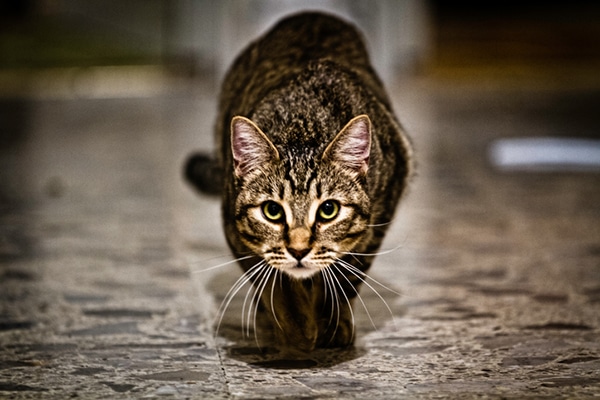
Tabbies come in many different coat colors. Photography ©Daniel Rodriguez Tirad | Thinkstock.
Tabbies come in many different colors, including brown, gray and a variety of red shades often called orange, ginger or marmalade. Some have stripes and others spots and many a combination of the two. You can tell what color a tabby is by looking at the color of his stripes and tip of his tail.
The tabby pattern is determined by the agouti gene, which causes the individual hairs to have bands of light and heavy pigmentation, and the tabby gene, which denotes the type of tabby patterns, namely stripes, blotches or spots of hairs of solid color.
Research done by feline geneticists Carlos Driscoll and Leslie Lyons at the beginning of this millennium confirmed five genetic clusters, or lineages, of wildcats from various parts of the world (such as Africa, Europe, China, Central Asia and the Middle East) and dating back some 10,000 years to be the ancestors of today’s ubiquitous domestic tabbies. And, it’s easy to understand how a coat with stripes and spots could camouflage well into natural surroundings.
4 tabby coat patterns
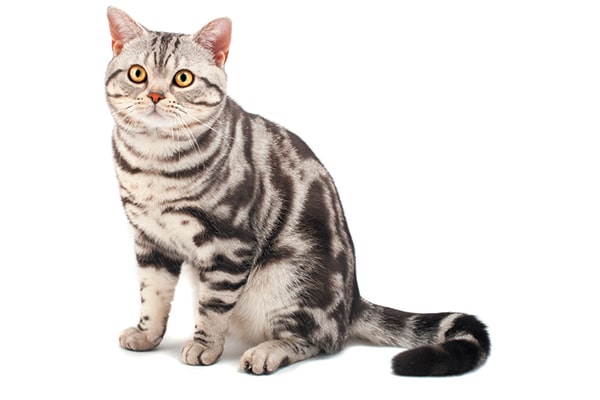
A classic or blotched tabby cat. Photography ©VladislavStarozhilov | Thinkstock.
1. The classic tabby coat, sometimes called blotched, has wide, dark stripes curving over the flanks and the shoulders and three large stripes running from the shoulder blades to the base of the tail. It’s often likened to a marble cake.
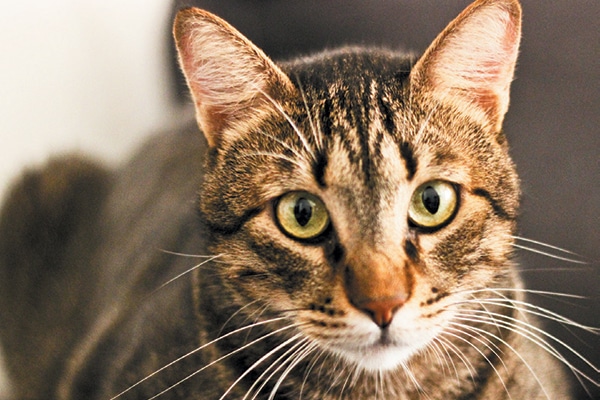
The mackerel tabby cat. Photography ©Keren_J | Thinkstock.
2. The mackerel tabby has either continuous or broken stripes running perpendicular to the spine, like a fishbone.
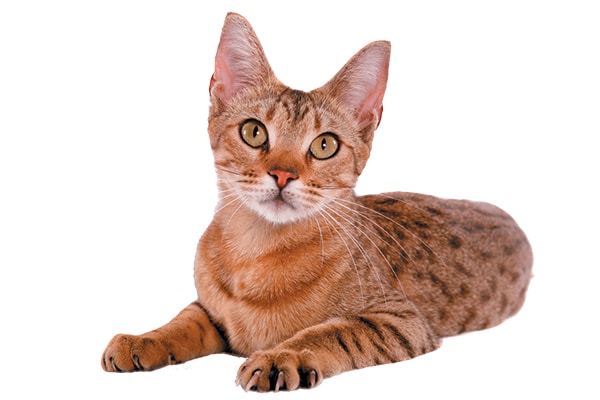
The spotted tabby cat. Photography by Tierfotoagentur | Alamy Stock Photo.
3. The spotted tabby has distinct round spots against a background of lighter fur.
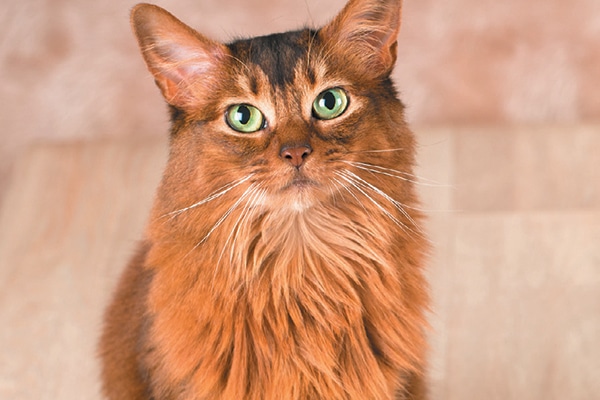
A ticked or agouti tabby cat. Photography ©grase | Thinkstock.
4. The fourth tabby coat pattern is called ticked or agouti. The coat on the body has almost no stripe. However, the legs, tail and face sport very thin stripes.
Facial features of tabbies
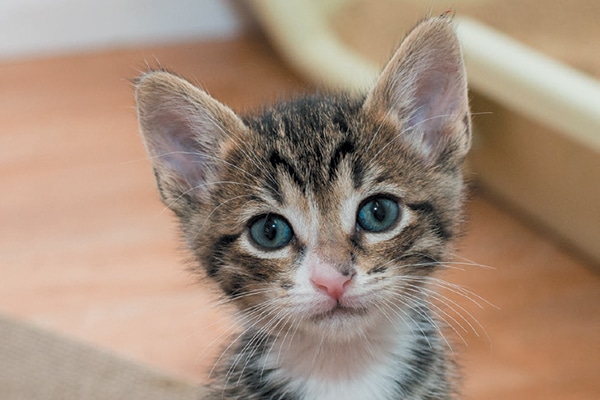
A feature common to tabbies is their facial markings that include a distinctive M on their foreheads and expressive pencil-thin striped markings around the eyes, affectionately referred to as “eyeliner.” Photography by Casey Elise Photography.
Another distinguishing feature common to tabbies is their facial markings that include a distinctive M on their foreheads and expressive pencil-thin striped markings around the eyes
affectionately referred to as “eyeliner.”
This is where legend pushes genetics aside with these intriguing notions as to how these markings came about.
- The prophet Muhammad, the founder of Islam, was an acknowledged cat lover. It is said that the M marking on the forehead of the tabby cat was created when he rested his hand on the brow of his favorite cat.
- Christians believe that when newborn baby Jesus wouldn’t stop crying, a cat climbed into the manger and started to purr, sending him off to sleep. In gratitude, the Virgin Mary marked the cat’s face with the first letter of her name.
- A non-religious version suggests that the M is a set of frown lines, the result of a cat staring at a mousehole in concentration, waiting for a mouse to emerge.
Tabby cat personality traits
When it comes to personality traits, tabbies are considered friendly, happy-go-lucky cats, intelligent, sassy, very affectionate and wonderful companions. Red tabbies, often called orange, ginger and marmalade tabbies, can be feisty and bossy. But this trait is linked to coat color (as in fiery red) and not to the tabby pattern.
No matter the science behind tabbies, if you’re a cat person, you’ve undoubtedly been enchanted by a tabby cat, whether it’s your own fabulous feline, a tabby that “works” in a local store or even a cartoon tabby such as Garfield who identifies with the very human trait of hating Mondays.
Famous tabby cats
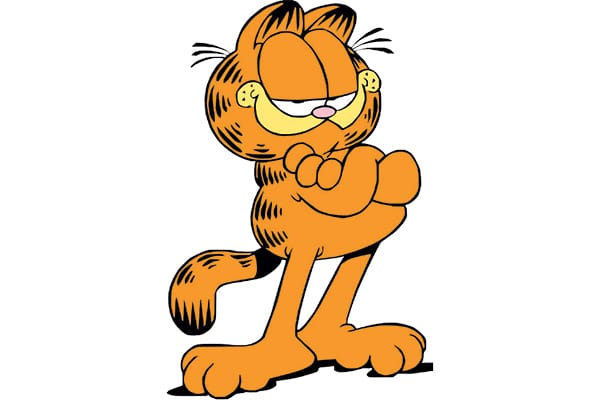
Garfield. Photography by Carlos Cardetas | Alamy Stock Photo.
1. Garfield is the world’s most famous cartoon orange tabby.
2. The first Algonquin Cat was an orange tabby that hotelier Frank Case named Rusty. The cat was a stray and had wandered into the hotel seeking refuge from the rain. He was renamed Hamlet by actor John Barrymore, who had played the Danish prince on Broadway. All the male Algonquin cats since have been named Hamlet, and the current feline is Hamlet VIII.
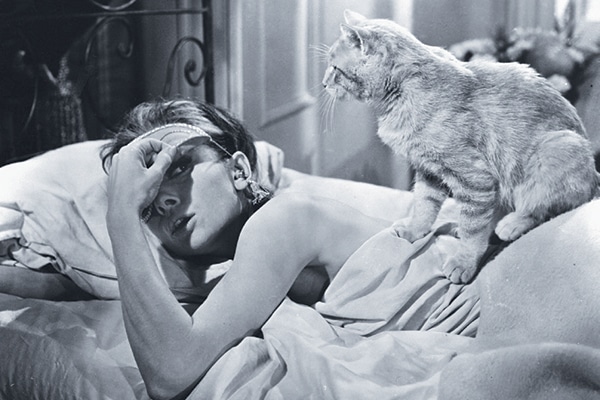
Orangey the cat in Breakfast at Tiffany’s. Photography by Ronald Grant Archive | Alamy Stock Photo.
3. Orangey was the orange tabby that starred with Audrey Hepburn in the movie Breakfast at Tiffany’s.
4. Tabby cats feature in a myriad of advertisements on TV endorsing their popularity as beloved family members.
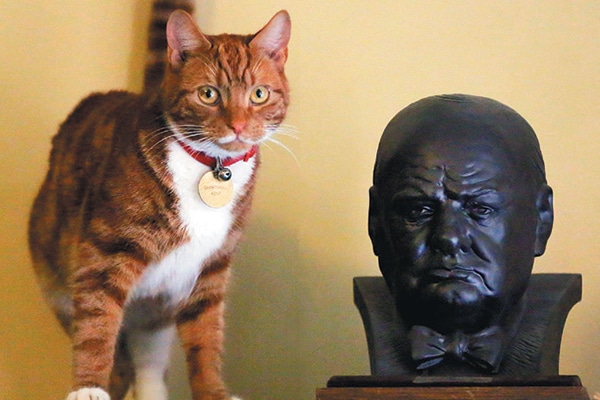
Winston Churchill loved orange tabbies. Photography PA Images | Alamy Stock Photo.
5. Sir Winston Churchill, Prime Minister of the United Kingdom twice, loved orange tabbies. It was his dying wish that a marmalade-colored tabby with four white socks and a white bib and named Jock should reside in perpetuity at Chartwell, his ancestral home in Kent, England. The incumbent cat at Chartwell is Jock IV and visited by ailurophiles from around the world.
6. Morris, an orange tabby, became the world’s first spokescat for 9Lives cat food and has been one of the most recognizable tabby faces in the United States since 1969. The current spokescat is the fifth to represent the brand.
Tell us: Do you have any tabbies? What types of tabbies are they?
Thumbnail: Photography by Casey Elise Photography.
This piece was originally published in 2017.
About the author
Ziggy and Tory “work” as feline muses for Sandy Robins, an award-winning multimedia pet lifestyle expert, author and pet industry personality. They like to disrupt the workflow by playing fetch with wand toys and directing food operations in the kitchen. Learn more about Sandy at sandyrobinsonline.com.
Editor’s note: Have you seen the new Catster print magazine in stores? Or in the waiting area of your vet’s office? Click here to subscribe to Catster and get the bimonthly magazine delivered to your home.
Read more about tabbies on Catster.com:
- Get to Know the Tabby Cat: Ancient Origins and Camouflage Coats
- 5 Different Types of Tabby Cat Patterns
- The Fascinating Facts Behind Cat Colors
The post What It Means to Be a Tabby Cat by Sandy Robins appeared first on Catster. Copying over entire articles infringes on copyright laws. You may not be aware of it, but all of these articles were assigned, contracted and paid for, so they aren't considered public domain. However, we appreciate that you like the article and would love it if you continued sharing just the first paragraph of an article, then linking out to the rest of the piece on Catster.com.




Post a Comment